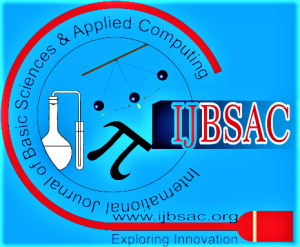![]()
Bactericidal Disinfection of Activated Carbon from Aerobic Microorganisms, Yeasts and Molds
Semenov Anatolii1, Sakhno Tamara2, Hmelnitska Yevgenia3, Semenova Nataliia4
1Semenov Anatolii*, Associate Professor, Department of Commodity Science, Biotechnology, Expertise and Customs, Poltava University of Economics and Trade, Poltava, Ukraine.
2Sakhno Tamara, Professor, Department of Agro-Technology and Ecology Poltava State Agrarian University.
3Hmelnitska Yevgenia, Associate Professor, Department of Commodity Science, Biotechnology, Expertise and Customs, Poltava University of Economics and Trade, Poltava, Ukraine.
4Semenova Nataliia, Researcher, Poltava Academy of Sciences of Technological Cybernetics of Ukraine, Poltava, Ukraine.
Manuscript received on February 19, 2022. | Revised Manuscript received on March 14, 2022. | Manuscript published on March 30, 2022. | PP: 1-4 | Volume-8, Issue-7, March 2022. | Retrieval Number: 100.1/ijbsac.G0472038722 | DOI: 10.35940/ijbsac.G0472.038722
Open Access | Ethics and Policies | Cite | Mendeley | Indexing and Abstracting
© The Authors. Published By: Blue Eyes Intelligence Engineering and Sciences Publication (BEIESP). This is an open access article under the CC-BY-NC-ND license (http://creativecommons.org/licenses/by-nc-nd/4.0/)
Abstract: One of the reasons for non-compliance with the requirements of regulatory documentation of powdered materials, including drugs is microbiological contamination. The search for alternative technical approaches of bactericidal disinfection using modern physical methods is relevant for research. Checking the compliance of activated carbon «Silcarbon», which is used in medicine as a sorbent, showed that the number of fungi (TYMS) exceeds the permissible norms in several times. A number of experimental studies where ultraviolet light, a combination of UV radiation and ozonation were used have been performed to disinfect «Silcarbon» from microbiological contaminants. It is shown that optimal results can be achieved in terms of the content of molds and yeasts: the total amount does not exceed 70 CFU/g using a combination of UV radiation and ozonation. When using pulsed UV lamps with a flux density of 10000-10500 W/m2, the amount was 30 CFU/g, and for molds fungi 20 CFU/g, which meets the requirements of regulatory documents. In dependance on the method of disinfection use the total amount of microbiological contamination of «Silcarbon» ranges from 50 to 70 CFU/g.
Keywords: Activated Carbon, Uv-Irradiation, Microbiological Purity, Dose of Uv Irradiation.
Scope of the Article: Organic Chemistry: the study of carbon and its compounds; the study of the chemistry of life.
